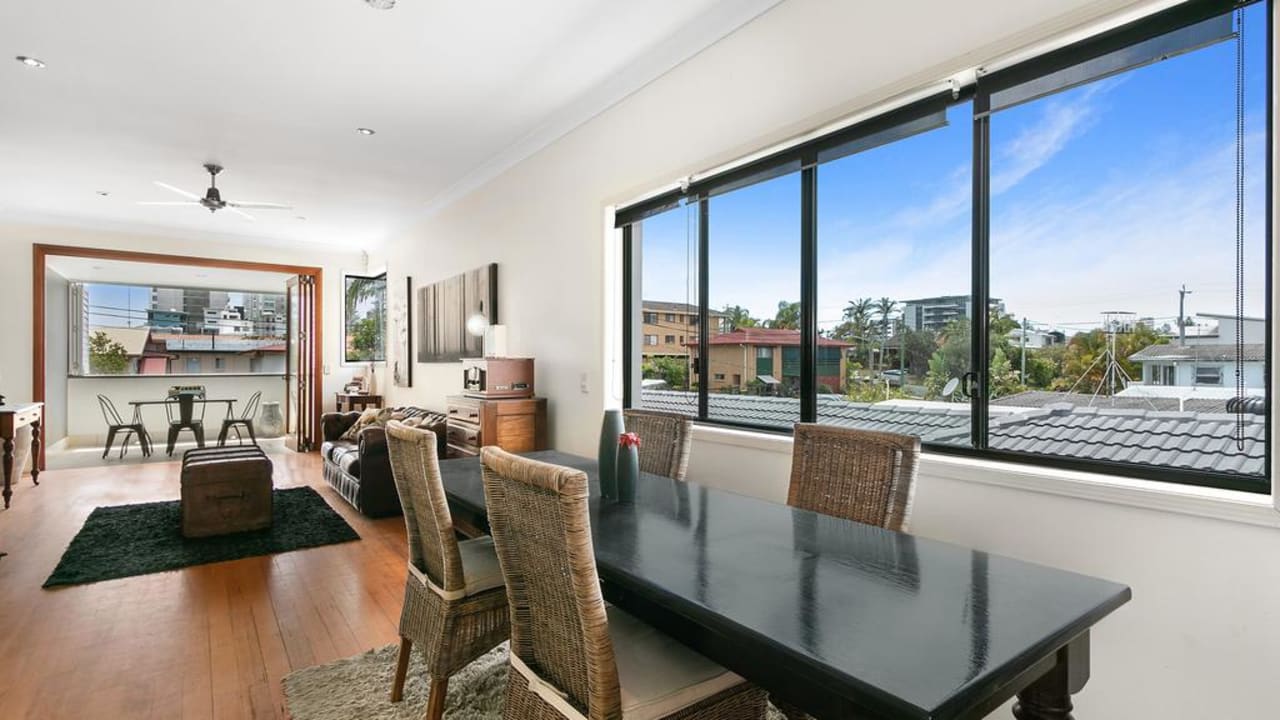Real Estate
What Bess Freedman Says About Luxury Real Estate in 2024: Trends, Challenges, and Opportunities

What Bess Freedman Says About Luxury Real Estate in 2024: Trends, Challenges, and Opportunities
Introduction: Meet Bess Freedman, the CEO of Brown Harris Stevens
Bess Freedman is not just a real estate leader, but also a champion of social change, philanthropy, and building a culture-first brokerage for agents, staff, and clients. As the CEO of Brown Harris Stevens, the oldest and most prestigious private real estate company in the United States, she oversees more than 2,500 agents and 55 offices across New York, Connecticut, New Jersey, Florida, and California.
Freedman has a remarkable background, having practiced law as an Assistant State’s Attorney and worked as an attorney at Legal Aid Society before joining the real estate industry in 2003. She joined Brown Harris Stevens in 2013 as Senior Vice President and became the company’s first-ever CEO in 2018. Under her leadership, the company has grown in size, revenue, and market share, while maintaining its reputation for excellence, integrity, and service.
Freedman is also a vocal advocate for social justice, diversity, and inclusion in the real estate industry and beyond. She has publicly confronted issues such as sexual harassment, reproductive rights, and racial discrimination, and has supported various causes and organizations, such as the Asian Real Estate Association of America, the LGBTQ+ Real Estate Alliance, and the Real Estate Board of New York’s Diversity Committee. In 2021, she received the REBNY’s Kenneth R. Gerrety Humanitarian Award for her contribution to the community.
In this article, we will learn from Freedman’s insights and perspectives on the luxury real estate market in 2024, covering the trends, challenges, and opportunities that are shaping the industry and the consumer behavior.
Trend 1: Technology 2024: Proptech challenges and profitability pursuit
Technology is a key driver of innovation and transformation in the real estate industry, especially in the luxury segment, where buyers and sellers expect the highest level of convenience, efficiency, and sophistication. However, the proptech sector, which encompasses the various technologies and platforms that facilitate real estate transactions and services, has faced some significant challenges in the past year, such as the Federal Reserve’s rate hikes, the slowdown in venture capital investment, and the housing market’s conditions, characterized by soaring prices and limited availability.
According to Freedman, proptech companies need to focus on their profitability and sustainability in 2024, rather than relying on external funding and valuation. She believes that proptech companies should expand their product offerings and invest in consumer education to navigate the housing market slowdown and differentiate themselves from the competition. She also emphasizes the importance of partnering with established and reputable real estate firms, such as Brown Harris Stevens, to leverage their expertise, network, and reputation.
Freedman also predicts that some of the technologies that will have the biggest impact in 2024 are data-driven property management, remote work, cybersecurity, artificial intelligence, and augmented reality. These technologies will enable real estate professionals and consumers to optimize rents, maintenance schedules, tenant satisfaction, flexibility, freedom, data protection, decision-making, predictive analytics, and property visualization.

Image by: https://www.realestate.com
Trend 2: The emergence of secondary markets will challenge the traditionally popular locales in 2024
One of the most notable trends in the luxury real estate market in 2024 is the emergence of secondary markets, which are smaller and less established markets that offer more affordable and diverse options for buyers and sellers. These markets are driven by the increased migration of people, especially millennials and baby boomers, who are looking for more space, privacy, amenities, and lifestyle choices, as well as the rise of remote work, which allows people to work from anywhere.
Freedman observes that some of the secondary markets that are gaining popularity in 2024 are Austin, Nashville, Denver, Miami, and Palm Beach. These markets offer a combination of factors that appeal to luxury buyers, such as lower taxes, warmer climates, cultural diversity, entertainment options, and business opportunities. Freedman also notes that these markets are attracting more investment and development, creating more supply and demand for luxury properties.
Freedman advises that real estate professionals and consumers who are interested in secondary markets should do their due diligence and research before making any decisions. She suggests that they should consider the market conditions, the local regulations, the neighborhood characteristics, the property features, and the potential risks and returns of each market. She also recommends that they should work with experienced and knowledgeable agents who have access to the best resources and information.
Trend 3: Style trends that will define luxury homes in 2024
Style is another important aspect of the luxury real estate market in 2024, as buyers and sellers are looking for homes that reflect their personal tastes, preferences, and lifestyles. According to a 2023 report by the Coldwell Banker Global Luxury program, some of the style trends that will define luxury homes in 2024 are:
- Glamorous architecture: Luxury buyers are drawn to homes that have distinctive and dramatic architectural features, such as curved walls, soaring ceilings, glass walls, spiral staircases, and geometric shapes. These features create a sense of grandeur, elegance, and uniqueness, as well as enhance the natural light and views of the property.
- Culinary-chic spaces: Luxury buyers are also looking for homes that have state-of-the-art kitchens and dining areas, where they can entertain and enjoy their culinary passions. These spaces are equipped with high-end appliances, custom cabinetry, marble countertops, wine cellars, and smart technology. They also have spacious and comfortable seating areas, where guests can mingle and relax.
- Exo-luxe design: Luxury buyers are also interested in homes that have a fusion of fashion and real estate, where the interior design is influenced by the style and personality of the owner. This trend, called exo-luxe, is exemplified by homes that feature branded furniture, artwork, accessories, and fabrics, creating a cohesive and customized look.
Freedman states that style is a subjective and personal matter, and that luxury buyers should choose homes that suit their needs and desires, rather than following the trends blindly. She also advises that luxury sellers should consult with professional stagers and designers, who can help them showcase their homes in the best possible way, highlighting the features and benefits that appeal to the target market.

Image by: https://www.realestate.com
Trend 4: Luxury housing and Tier 2 cities to lead realty sector growth in 2024
Another trend that will reshape the real estate market in 2024 is the growth of luxury housing and Tier 2 cities, which are smaller and less developed cities that offer more opportunities and potential for real estate development and investment. According to a report by Knight Frank, the luxury housing segment in India is expected to grow by 10% in 2024, driven by the increasing demand from high-net-worth individuals, the improving infrastructure and connectivity, and the favorable policies and incentives. Some of the cities that are witnessing a surge in luxury housing are Pune, Hyderabad, Ahmedabad, and Kochi.
Freedman believes that luxury housing and Tier 2 cities are attractive options for real estate professionals and consumers who are looking for new and emerging markets that offer more value and diversity. She says that these markets have a lot of potential and promise, as they are experiencing rapid urbanization, economic growth, social development, and cultural vibrancy. She also points out that these markets are more affordable and accessible, compared to the saturated and expensive Tier 1 cities, such as Mumbai, Delhi, and Bangalore.
Freedman cautions that luxury housing and Tier 2 cities are not without challenges and risks, such as the lack of regulation, transparency, and quality standards, the environmental and social impacts, and the political and economic uncertainties. She advises that real estate professionals and consumers who are interested in these markets should be careful and diligent, and seek the guidance and support of reputable and reliable partners, such as Brown Harris Stevens, who have the expertise, experience, and network to help them navigate the complexities and opportunities of these markets.
Trend 5: Exclusive and tailored service
The last trend that will define the luxury real estate market in 2024 is the demand for exclusive and tailored service, which is the hallmark of living with Four Seasons Private Residences. Four Seasons Private Residences offers private homes set in iconic cities, secluded beach communities, mountain retreats, modern metropolises, and plenty of desirable spots in between. These homes are not only luxurious and comfortable, but also come with the unparalleled service and amenities that Four Seasons is known for.
Freedman explains that living with Four Seasons means that you can rely on a dedicated team to anticipate your every need, building lasting and trusted relationships along the way. Whether it’s booking a table at your favorite restaurant, preparing a custom menu, or arranging a private jet, you can expect nothing but the best from Four Seasons. In addition, you can also enjoy the benefits of being part of a global community of like-minded homeowners, who share your passion for travel, culture, and lifestyle.
Freedman also reveals that living with Four Seasons is not limited to when you’re home. Whenever you find yourself away, you can rest easy knowing that your residence is always in expert hands. When you’re gone, the on-site team manages your property to the highest standards. And when it’s time to come back, you can expect everything to be perfectly ready for you, including your favorite groceries stocked in the kitchen.
Summary: What Bess Freedman Says About Luxury Real Estate in 2024
In this article, we have learned from Bess Freedman, the CEO of Brown Harris Stevens, about the latest trends, challenges, and opportunities in the luxury real estate market in 2024. Here are the main points we have covered:
- Technology 2024: Proptech companies need to focus on profitability and sustainability, and leverage the technologies that enhance property management, remote work, cybersecurity, artificial intelligence, and augmented reality.
- Secondary markets: Smaller and less established markets, such as Austin, Nashville, Denver, Miami, and Palm Beach, are gaining popularity among luxury buyers, who are looking for more affordable and diverse options, driven by lower taxes, warmer climates, cultural diversity, entertainment options, and business opportunities.
- Style trends: Luxury buyers are drawn to homes that have glamorous architecture, culinary-chic spaces, and exo-luxe design, which reflect their personal tastes, preferences, and lifestyles.
- Luxury housing and Tier 2 cities: Luxury housing segment in India is expected to grow by 10% in 2024, driven by the increasing demand from high-net-worth individuals, the improving infrastructure and connectivity, and the favorable policies and incentives. Tier 2 cities, such as Pune, Hyderabad, Ahmedabad, and Kochi, offer more opportunities and potential for real estate development and investment.
- Exclusive and tailored service: Living with Four Seasons Private Residences means that you can enjoy the unparalleled service and amenities that Four Seasons is known for, as well as the benefits of being part of a global community of like-minded homeowners. You can also rely on a dedicated team to take care of your property and your needs, whether you’re home or away.
We hope that you have enjoyed reading this article and learned something new and useful. If you have any questions or comments, please feel free to share them with us. Thank you for your time and attention.
Business
How to List Your Property for Rent: A Step-by-Step Guide

Listing a property for rent may sound simple, but doing it the right way makes a big difference. A well-made listing attracts better tenants, reduces vacancy time, and saves you effort later. Many property owners struggle because they rush the process or miss key details. This guide explains how to list property for rent step by step, using clear and practical advice.

Why Listing Your Property the Right Way Matters
Your rental listing is the first impression for potential tenants. It informs them of what to expect and whether your property meets their needs. A poorly listed property can result in low interest, wasted inquiries, or attracting the wrong tenants.
When you list your property the right way, you:
- Reach serious and relevant renters
- Get better quality inquiries
- Rent out faster
- Avoid confusion and repeated questions
Prepare Your Property Before You List
Before you list property for rent, make sure the home is ready.
Clean and Fix Small Issues
Tenants notice details. Clean the property thoroughly. Fix leaky taps, broken switches, or chipped paint. Small repairs improve trust and value.
Decide the Right Rent
Check similar properties in your area. Look at size, location, and amenities. Setting a fair rent helps you attract more renters quickly.
Write a Clear and Honest Property Description
Your description should be simple and accurate. Avoid exaggeration. Focus on what renters care about most.
What to Include
When you list property for rent, include:
- Property type (house, apartment, room)
- Number of bedrooms and bathrooms
- Size of the property
- Monthly rent and deposit
- Location and nearby landmarks
- Available move-in date
Short sentences work best. Clear information builds trust.
Use High-Quality Photos
Photos are one of the most important parts of a rental listing.
Tips for Better Photos
- Use natural daylight
- Clean rooms before taking pictures
- Capture all key areas
- Avoid blurry or dark images
Good photos increase views and inquiries. They help renters imagine living there.
Highlight Key Features and Amenities
Renters often scan listings quickly. Make it easy for them.
Use bullet points for features such as:
- Parking availability
- Furnished or unfurnished
- Balcony or garden
- Air conditioning or heating
- Pet policy
This makes your listing easier to read and compare.
Choose the Right Platform to List
Where you list matters as much as how you list.
Look for platforms that:
- Attract active renters
- Are easy to use
- Allow you to list rental property for free
- Offer inquiry and lead management
Free listing platforms reduce cost and risk. They are ideal for first-time landlords and independent property owners.
Be Clear About Rules and Preferences
Transparency saves time. If you have specific rules, mention them clearly.
Examples:
- No smoking
- Pets allowed or not
- Family or working professionals preferred
This filters out unsuitable inquiries and helps you connect with the right tenants.
Respond Quickly to Inquiries
Once your listing is live, inquiries will start coming in. Speed matters.
Why Fast Responses Help
- Renters often contact multiple listings
- Quick replies show professionalism
- Faster replies increase booking chances
Using one dashboard to manage inquiries makes this easier and more organized.
Review Applications Carefully
Do not rush the final decision.
When reviewing applications:
- Check basic tenant details
- Ask relevant questions
- Verify documents if needed
Choosing the right tenant reduces future problems and ensures a smooth rental experience.
Update or Improve Your Listing if Needed
If you are not getting enough responses, review your listing.
Ask yourself:
- Are the photos clear and attractive?
- Is the rent competitive?
- Is the description complete?
Small updates can improve visibility and results.
Common Mistakes to Avoid
Many property owners make simple mistakes when they list property for rent.
Avoid:
- Posting incomplete details
- Using poor-quality photos
- Setting unrealistic rent
- Ignoring inquiries
- Listing on the wrong platforms
Fixing these mistakes can improve your success quickly.
Final Takeaway
Learning how to list property for rent the right way is about clarity, preparation, and consistency. Prepare your property well. Write a clear description. Use good photos. Choose the right platform where you can list rental property for free. Respond fast and screen tenants carefully.
A strong listing attracts the right renters and saves time. When done correctly, renting out your property becomes simple, smooth, and stress-free.
A strong listing attracts the right renters and saves time. It also reduces back-and-forth communication and avoids unnecessary follow-ups. When your listing is clear and complete, tenants understand the property better before reaching out. This leads to more serious inquiries and fewer mismatches.
Taking time to prepare your property creates a positive impression. Clean spaces, working fixtures, and small repairs show that the property is well maintained. This builds trust and encourages renters to take the next step. Clear photos and honest details help renters feel confident about their choice.
Choosing the right platform is equally important. A platform that allows you to list rental property for free helps you save money while reaching active renters. It also gives you flexibility to update your listing anytime. Managing inquiries from one place keeps everything organized and reduces stress.
Business
The Importance of Professional Lift Installation in Urban Singapore

In today’s urban landscapes, elevators are essential components that define the functionality and experience of buildings. They significantly impact accessibility, safety, traffic flow, and user interactions.
In densely populated cities, lift systems are not just a convenience; they are critical infrastructures that facilitate daily movement and interactions among residents and visitors alike.

The Growing Need for Professional Lift Installation
As Singapore undergoes rapid urbanization, the demand for consistent and compliant lift systems has surged. Professional lift installation is no longer an option but a necessity in this fast-evolving built environment. This specialized service combines planning, regulatory compliance, and precision engineering to enhance both residential and business developments.
Understanding Professional Lift Installation
Professional lift installation involves a comprehensive, step-by-step process executed by highly qualified specialists. This process includes:
- Effective Planning: Working closely with architects and engineers to ensure the lift systems align with the overall building structure.
- Design: Creating a tailored lift design that suits the specific requirements of the building.
- Installation and Testing: Installing the lift system, followed by rigorous testing to ensure it meets all safety regulations.
- Certification: Obtaining necessary certifications before the lift is made available for public use.
This thorough approach assures the reliability and safety of lift systems, ensuring they function optimally in various environments.
The Singapore Context
Singapore’s skyline is dominated by high-rise buildings, creating unique challenges for vertical mobility. The demand for reliable lifts is high, and safety expectations are stringent. The government has established a set of precise lift regulations to maintain project quality. Compliance with these standards is vital to ensure user safety and optimal performance.
Key Aspects of Professional Installations in Singapore
- Adherence to Safety Codes: Professional installers rigorously comply with guidelines set by the Singapore Civil Defence Force (SCDF), Building and Construction Authority (BCA), and Ministry of Manpower (MOM). This compliance minimizes risks associated with lift operations.
- Location Evaluation and Planning: Each building has unique challenges. Detailed site surveys and feasibility studies are critical for effective planning, taking into account shaft sizes, load demands, and traffic flow.
- Integration of Advanced Technology: Modern lift systems incorporate intelligent solutions, including regenerative drives and destination-based dispatch systems, enhancing both energy efficiency and user experience. These systems are designed to run smoothly and minimize wear over time.
The Science of Lift Installation
Understanding how lift systems work is essential for stakeholders involved in the installation process. A systematic approach ensures compatibility and reliability.
Pre-Design and Planning
The process starts with discussions among stakeholders to assess construction layouts and regulatory restrictions. This stage ensures that functional and compliance requirements align.
Installation Process
The installation process includes:
- Mechanical and Electrical Setup: This involves installing guide rails, cabins, electrical systems, controls, and safety devices.
- Testing and Certification: The lift undergoes rigorous testing, including load and speed tests, followed by independent inspections to verify compliance before handover.
This structured methodology safeguards both users and building owners, ensuring a smooth operation of lift systems.
Benefits of Professional Lift Installation
Enhanced Safety and Compliance
Professional installations significantly reduce operational risks through certified processes that meet legal safety requirements, providing peace of mind for occupants and owners alike.
Cost-Effectiveness and Long-Term Performance
Well-installed systems typically experience fewer failures, reducing maintenance costs. Energy-efficient components not only lower operational expenses but also contribute to the system’s overall longevity and performance.
Quality Assurance and Transparency
Professional teams maintain detailed documentation and provide regular progress reports to stakeholders. This transparency fosters credibility and accountability throughout the project.
Selecting a Professional Installer
When choosing a lift installation contractor, it is essential to verify their credentials and experience. Look for:
- Proper licensing
- Previous work references
- Knowledge of local regulations
Understanding the cost factors involved is also crucial, as installation expenses can vary based on building height, design specifics, and maintenance packages.
The Future of Lift Installation
As technology advances, the development of smart elevators equipped with data-driven controls and predictive maintenance integration is gaining traction. These innovations lead to energy-efficient designs that meet environmental standards and enhance user experiences.
Conclusion
Professional lift installation is a vital element in the modern architectural landscape of Singapore. It ensures safety, compliance, and reliability in an urban setting characterized by vertical growth. By employing structured processes and advanced technology, professional lift installation fosters sustainable building performance and enhances user mobility.
FAQs
What does professional lift installation involve?
It encompasses planning, design, installation, testing, and certification processes that comply with local safety standards.
Why are lift regulations important?
They ensure user safety, system reliability, and adherence to standards outlined by local authorities.
How long does the installation process take?
The timeline varies based on building size and lift type but can be expedited through effective planning.
Do professional installations lead to fewer maintenance issues?
Yes, properly installed systems generally experience fewer breakdowns, supporting smoother long-term maintenance.
Are smart elevator systems becoming common?
Yes, their adoption is increasing due to benefits like energy efficiency and enhanced user control.
Business
Brand New Houses in Jordan Springs | Your Sanctuary Awaits
-
Business2 years ago
Cybersecurity Consulting Company SequelNet Provides Critical IT Support Services to Medical Billing Firm, Medical Optimum
-
Business3 years ago
Team Communication Software Transforms Operations at Finance Innovate
-
Business3 years ago
Project Management Tool Transforms Long Island Business
-
Business2 years ago
How Alleviate Poverty Utilized IPPBX’s All-in-One Solution to Transform Lives in New York City
-
health3 years ago
Breast Cancer: The Imperative Role of Mammograms in Screening and Early Detection
-
Sports3 years ago
Unstoppable Collaboration: D.C.’s Citi Open and Silicon Valley Classic Unite to Propel Women’s Tennis to New Heights
-
Art /Entertainment3 years ago
Embracing Renewal: Sizdabedar Celebrations Unite Iranians in New York’s Eisenhower Park
-
Finance3 years ago
The Benefits of Starting a Side Hustle for Financial Freedom
































